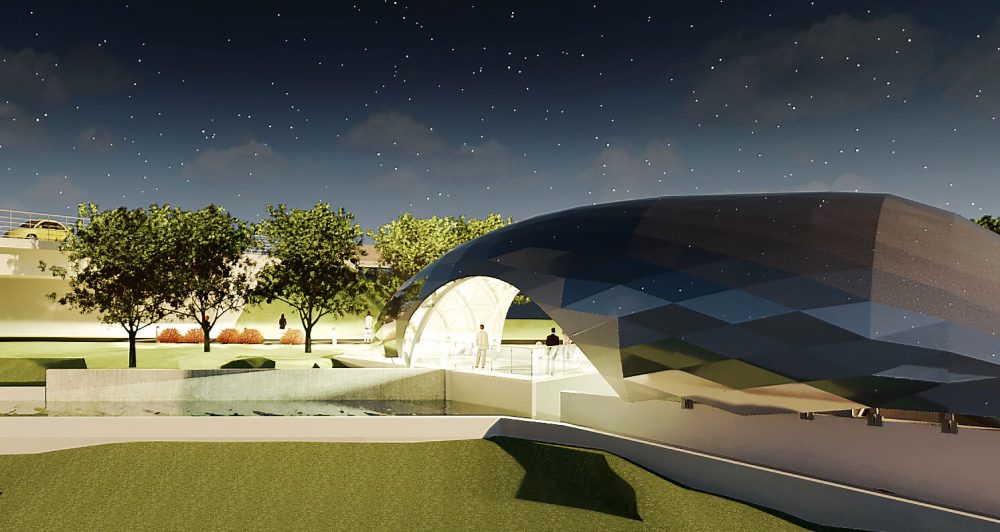The River Ness hydro project will provide STEM learning opportunities for Highland school pupils and highlight a regionally important working hydropower project

The River Ness flows through Inverness in the Highlands of Scotland and is the future site of the River Ness Hydro project (Credit: Science Skills Academy)
Dr Emma Robertson, Science Skills Academy project manager at the Highlands and Islands Enterprise, provides an insight into how a flagship hydropower project in Scotland is hoping to inspire and encourage young people to learn more about science, technology, engineering, and mathematics (STEM) subjects and the importance of renewable technologies.
The Science Skills Academy (SSA) is a project that delivers educational, inspirational, and hands-on STEM activities to school pupils across the Highlands of Scotland.
Studies have shown that as a child advances in age, their interest and enthusiasm in STEM decreases.
By targeting 10-14-year-olds, the SSA aims to sustain pupil engagement with STEM, thereby maintaining their interest and increasing the chances that they will study STEM subjects at school.
The SSA also raises young people’s awareness of the wide range of STEM careers, pathways and employers, in particular, those local to them in the Highlands.
Most of the project delivery occurs in the Highland Newton Rooms, a network of bespoke STEM education facilities established by the SSA that provide modern and stimulating settings.
The SSA also engages with other organisations and ventures to further these goals, such as its involvement with the River Ness Hydro project.
Hydro history
The Highlands and Islands have a history of generating renewable energy. One of the first known hydroelectric schemes was built on the banks of Loch Ness at the end of the 19th Century and was the start of a now well-established renewable energy sector in the region.
The Highlands and Islands is active in renewable energy generation: as well as hydroelectric schemes throughout the region, the north Highlands is home to Scotland’s largest offshore windfarm, and research into wave and tidal energy is being carried out off Orkney.
The renewable energy sector, both generation for consumption and research into new technologies, is a key STEM employer for the region and is one of the topics that the SSA focuses on.
Secondary school pupils spend time at a Newton Room learning about the science and technology behind electricity generation and renewable energy sources, including hydroelectricity.
By working with local STEM employers, activities are developed to incorporate skills or real-life applications from STEM sectors, thus bridging the gap between education and industry.
River Ness
The SSA is a partnership project led by Highlands and Islands Enterprise, which is an economic development agency that has knowledge of the regionally significant STEM sectors.
Being developed by the Highland Council near Whin Park in Inverness, the River Ness hydro project is an example of collaboration via the SSA project to bring together expertise to create a flagship venture for the region.
It will provide STEM learning opportunities for Highland school pupils and highlight a regionally important working hydropower project.

Highland Council is preparing to install a 92-kilowatt Archimedes Screw hydro turbine that will utilise existing infrastructure from a historical hydroelectric plant situated on the River Ness. This multifaceted asset for the Highlands will provide:
- On-site generation of an energy supply that will provide 50% of the energy demand for the nearby Inverness Leisure Centre – currently one of the highest energy-consuming buildings in the region.
- A catalyst for meeting climate and ecological emergency targets by saving up to 1,420 tonnes of CO2 per year.
- An attraction for the six million yearly visitors to the Highland that will include a focus on the climate emergency and Scotland’s history in renewable energy sources and hydroelectricity.
- An opportunity for the region’s school pupils to learn about a form of renewable energy generation that is key to the Highlands while also learning about career opportunities and pathways.
Although the educational content for the River Ness Hydro project is still at a nascent stage, the SSA will create online educational materials targeting 10–14-year-olds that will be freely available to schools.
It is anticipated that these will focus on electricity generation and the mechanisms of hydroelectric schemes, and how renewable energy sources such as hydroelectricity help address climate change.
As well as activities for schools, the SSA will develop content for the public at the River Ness Hydro viewing gallery.
Education
The Highland Council has begun detailed designs works and preliminary manufacturing works on the £2.5m ($3.5m) River Ness Hydro Project, which is part-funded by the Scottish government through Salix Finance Ltd.
It will operate for an excess of 65 years and has been implemented as part of the council’s wider ambition to create long-term, positive change to the city and region, while leading the way in low-carbon generation in Inverness.
Taking a strategic approach such as this ensures that savings on energy costs can continue to grow over time, freeing up capital for further investment in the community.
The hydroelectric turbine is set to complete in Spring 2022. Educational material developed by the SSA will be available upon its launch.
This article originally appeared in International Water Power & Dam Construction magazine
